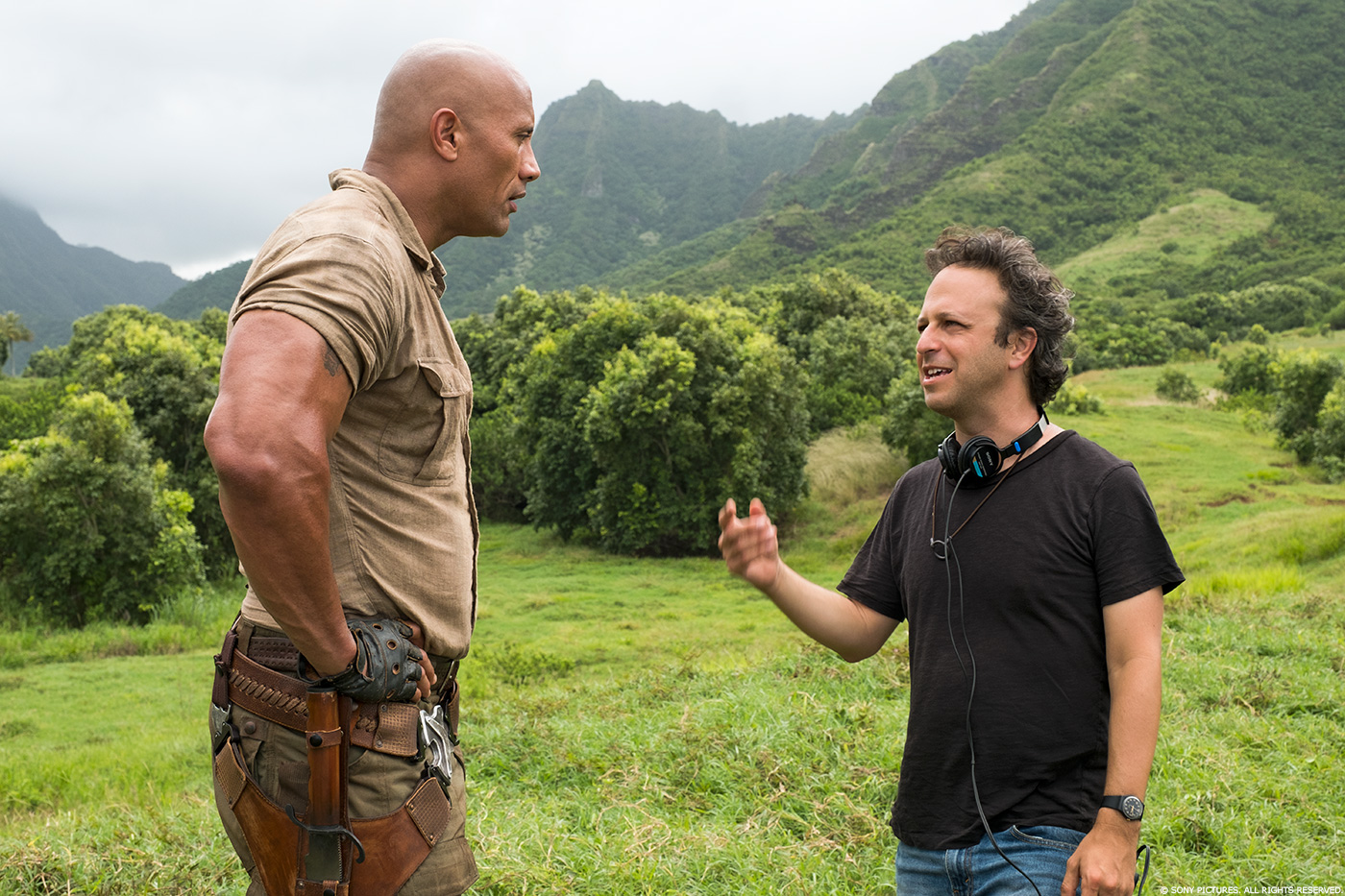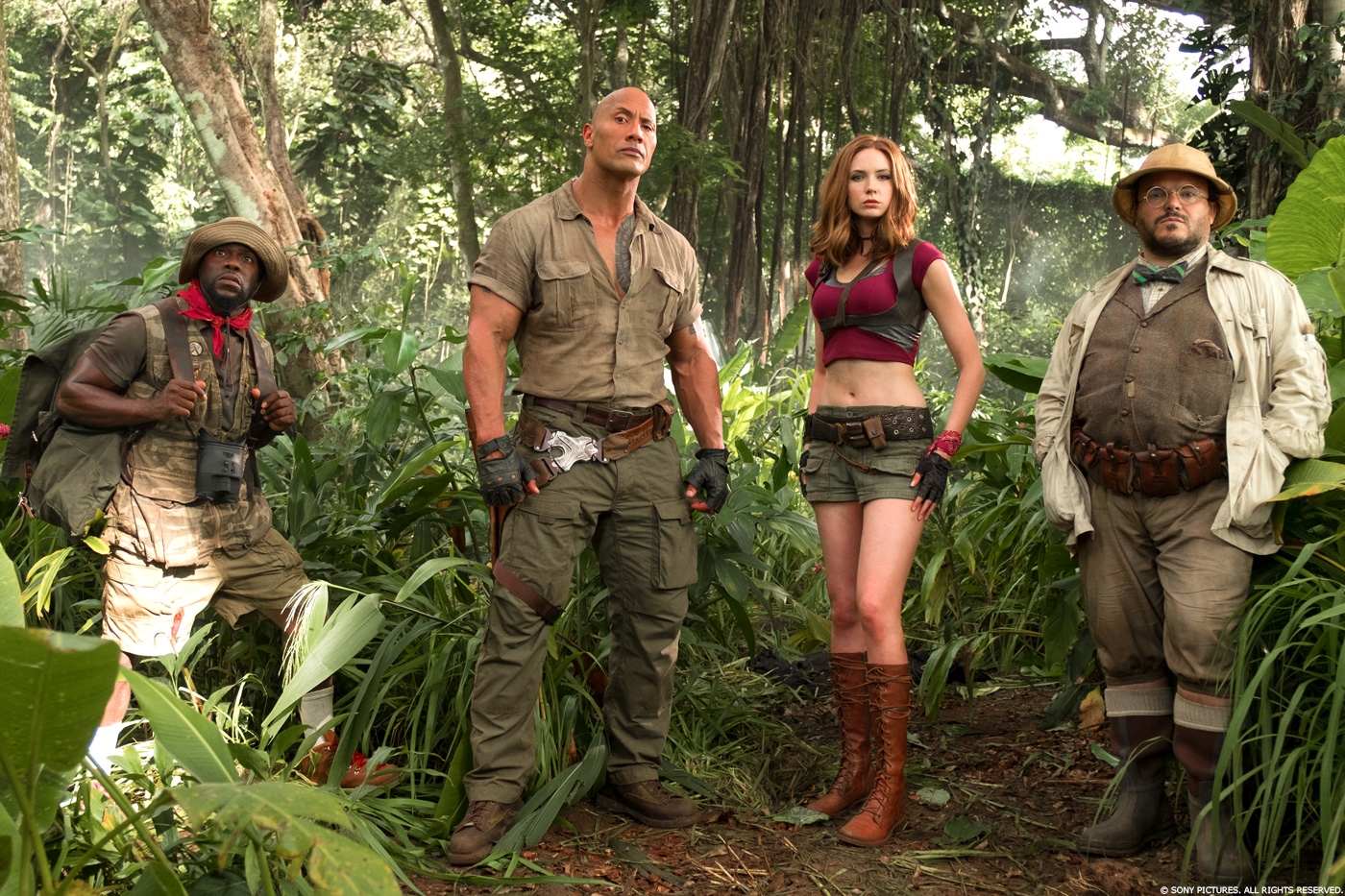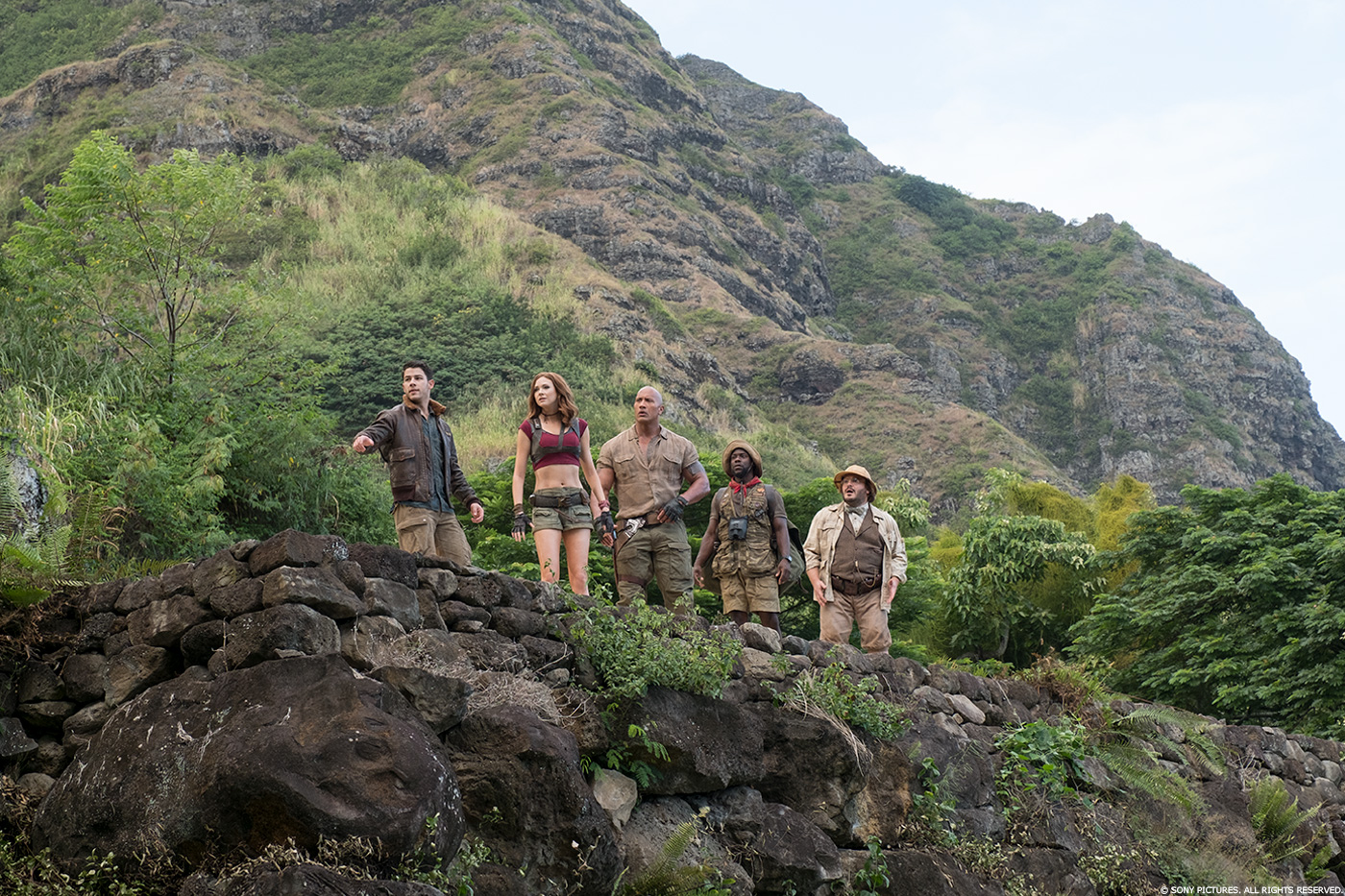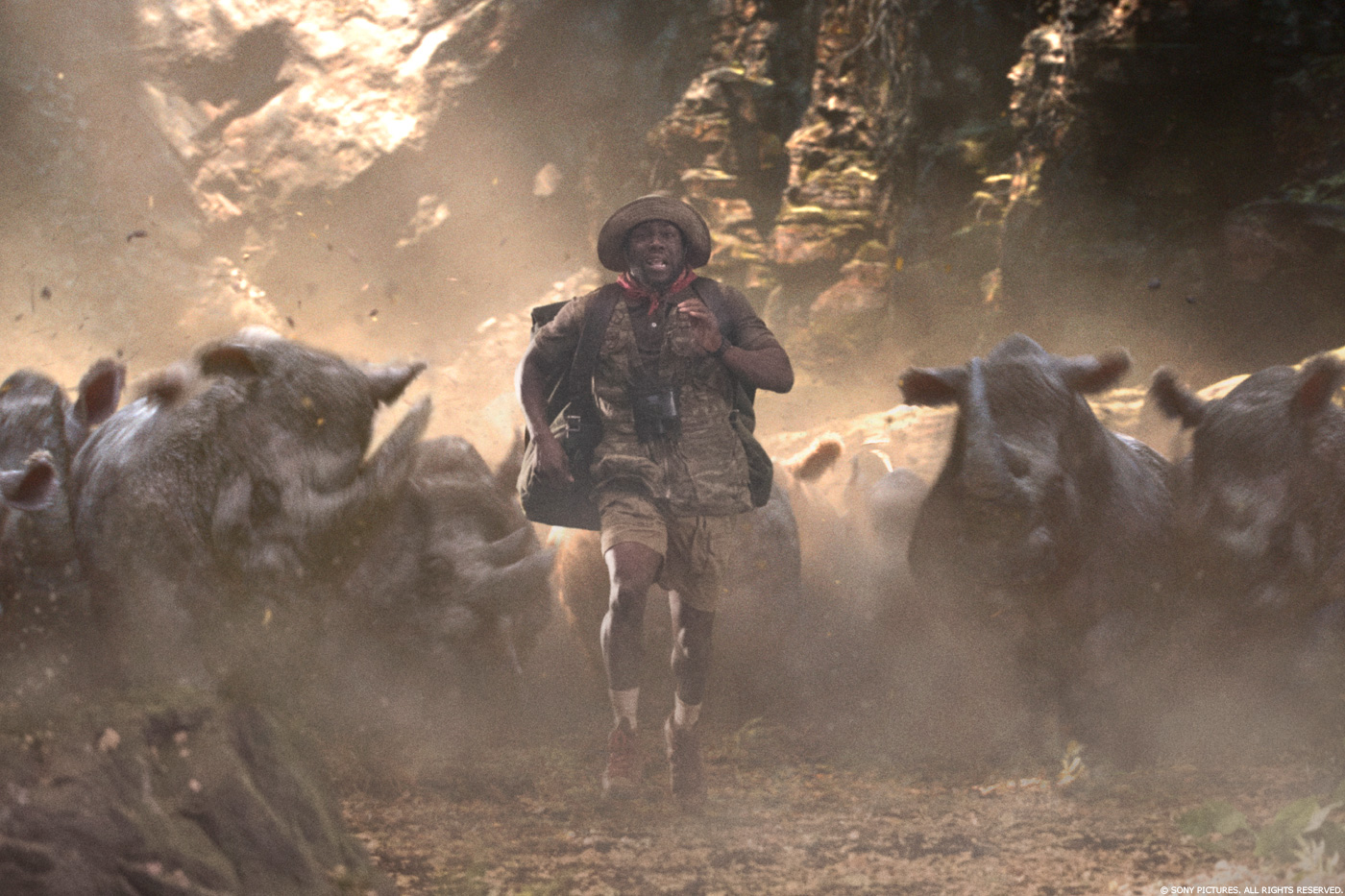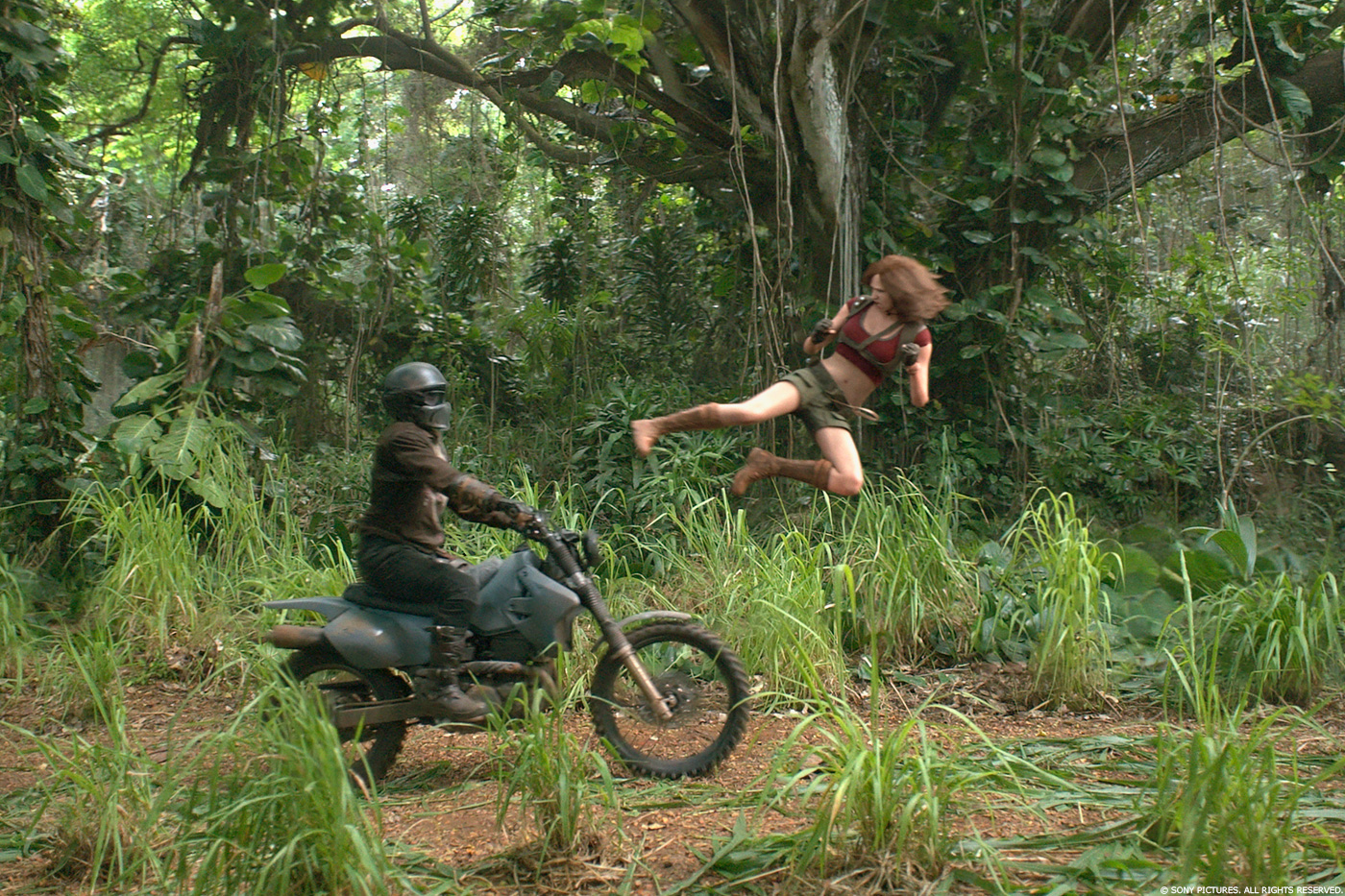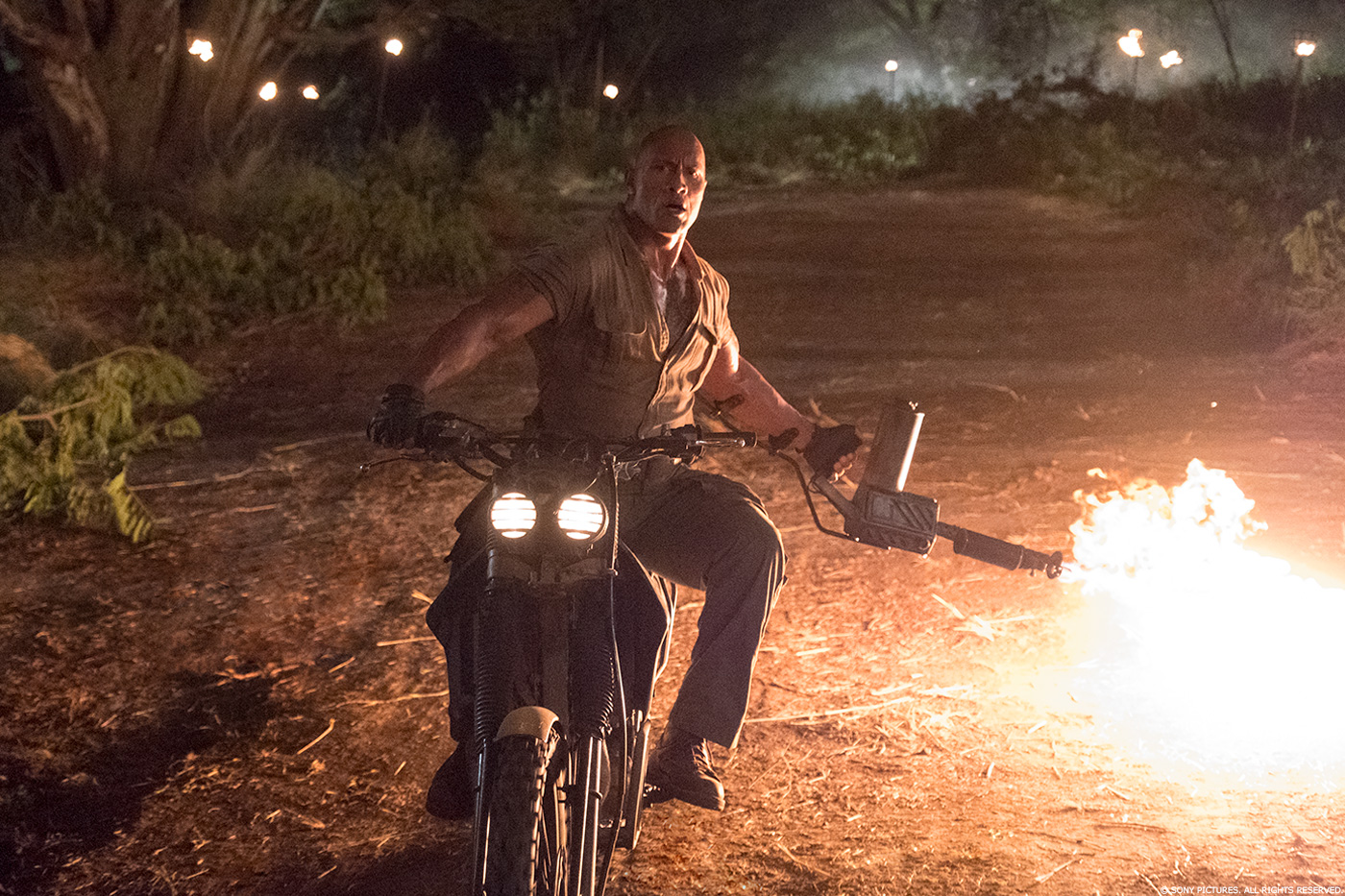Jerome Chen started his career in 1986, he joined Sony Pictures Imageworks in 1992. He has worked on many films like IN THE LINE OF FIRE, JAMES AND THE GIANT PEACH and CONTACT. As a VFX supervisor he took care of the effects of STUART LITTLE, BEOWULF, THE AMAZING SPIDER-MAN and SUICIDE SQUAD.
What is your background?
I was trained in traditional fine arts, with a focus on illustration.
How was the collaboration with director Jake Kasdan?
My relationship with Jake was fantastic. He is eloquent and has a clear vision.
What was his approach and expectations about the visual effects?
Jake’s basic tenet was to be clear and simple as possible in the design and composition of the shots. It was important that the audience understand the intent of the story telling.
How did you organize the work with your VFX Producer Scott Puckett?
From a creative standpoint we try to cast facilities with an eye towards their quality of work. From a budgetary standpoint we identify location with good rebates so we can stretch our budget. On this project we centered on Australia and Canada (specifically Montreal).
Can you tell us how you choose the various VFX vendors?
We chose facilities that had already executed work on previous projects which were related to what we needed for JUMANJI. For instance, I liked Rodeo FX‘s hippo and crocodile work on LEGEND OF TARZAN; they were a perfect fit to execute the first animal attack when Bethany (Jack Black) is eaten by the hippo. Rodeo FX would go on to create crocodiles, tarantulas, scorpions and centipedes for other scenes.
Iloura’s environment work in MAD MAX: FURY ROAD, and their achievements in GAME OF THRONES made them a perfect candidate for our most challenging sequence, the Rhino Helicopter chase.
To create most of our jungle environments and bring life to our digital elephant and jaguars, MPC was an obvious choice because of their work on THE JUNGLE BOOK.
Can you tell us more about your collaboration with their VFX supervisors?
I think’s it’s important to meet each supervisor face-to-face at the beginning of the process. In this case, Glenn Melenhorst and his producer Ineke Major of Illoura were in Los Angeles and I was able to see them there, and we talked in broad strokes about the vision of their sequences Bob Winter (MPC) and I had worked together previously on a few other films, so we already had a short hand. I went to see Alexandre Lafortune and his team at Rodeo FX in Montreal and established an early rapport. It makes a huge difference because the majority of the remaining interaction is over Skype and cineSync sessions for 40 weeks. I did go to Montreal two other times for more face to face reviews. And to eat good food. I wanted to go see Glenn in Australia but we just ran out of time.
The vendors are all around the world. How did you proceed to follow their work?
I rely on Shotgun and cineSync as the backbone of my production pipeline. Shotgun updates me with incoming work and I can give feed back instantly. The new integration between cineSync and Shotgun has streamlined getting media to both sides for reviews.
The heroes are taken inside the game. Can you explain in detail about the design and the creation of this effect?
Jake wanted an organic effect, where we can see the materiality of the characters pulled into the game; but we wanted something similar to the effect in the original JUMANJI from 1995 where the characters Judy and Peter and stretched out like taffy as they are drawn into the board.
Our version uses particle effects and fluid sims created by Iloura. It was important to see the natural of the characters surface colors as they streamed off into the game. 3D stand-ins were rotomated so there were accurate surfaces to emit particles, and a full volumetric effect was created for the interior volume of the bodies as they broke apart into streams. The streams eventually turn to green plasma as they enter the jewel embedded into the top of the Jumanji game console.
How did you work with the stunt and SFX teams?
During pre-production meetings we went into great detail on what VFX would require day-to-day from the stunt and SFX teams. We had top notch leaders in those departments – Jack Gill as action director (THE FATE OF THE FURIOUS, FURIOUS 7) and J.D. Schwalm (THE JUNGLE BOOK).
There is a big action sequence on a helicopter. How did you use the previs for the gimbal and light interactions?
We split our previs between The Third Floor and MPC Previs. The Rhino sequence was pre-visualized by MPC Previz, spending a few months on it as we iterated shots through editorial to find the main spine of the sequence. The previs for this sequences served multiple functions: a) it served to help Jake explore the design of the sequence; b) it served as a budget template for Scott Puckett to estimate cost of sequence; c) it was a visual tool for other departments (Art, SFX, Stunts and VFX) to break apart the sequence and drill down on methodology.
J.D Schwalm mounted a full scale Huey UH-1B on a six-axis motion base so we could photograph some 6 pages of dialog shots over 4 days. Five actors in a scene require a good deal of photographic coverage, so we needed a flexible lighting scenario that was not shot specific. Cinematographer Gyula Pados created a generic lighting scheme where the helicopter would seem to move through intermittent shadows with occasional passes of high exposure sunlight.
After editorial selects were picked, we delivered the sequence to Iloura and they spent more than six months creating 200+ shots involving a CG Huey with 5 digital doubles, and a vast canyon complete with rampaging Rhinos.
Jumanji is full of creatures. What was your approach about it?
We wanted the creatures of JUMANJI to be over-sized (so they were more threatening and more fantastic) but still naturalistic in appearance. We created a large reference library of animals (hippos, crocodiles, elephants, jaguars, vultures, scorpions, tarantulas and centipedes) and these were sent to the facilities after Jake approved them.
Each facility used their art department to create more concepts to fine tune the design. These were then explored in 3D until the asset was approved to be used in test shots. Jake was involved during each step and had many opinions about the texture and look of each creature.
How was simulated their presence on-set for the actors and their interactions?
We were very lo-tech in regards to the on-set presence of the creatures; we had a stuffed cheetah for lighting reference, and an old school painter’s pole with a tennis ball. Not ground breaking but effective.
Which one was the most complicated to create and animate and why?
The jaguars were definitely the most difficult to light and animate. Reaching a level of nuance for the big cats to be believable took many iterations. I would have liked about 6 weeks to get them right but production is like that da Vinci quote. We don’t finish, we abandon. Time always wins.
How did you design and create the big city in the mountains?
Based on sketches from Production Designer Owen Paterson, Iloura expanded the design and added details influenced by Ottoman architecture. I shot an aerial plate on Kauai and provided a select to Iloura. The shot is only a few seconds long but has incredible detail; dozens of people are moving along the bridges, flags ripples, smoke rises from dozens of fires, and birds move across the frame.
Can you tell us more about the creation of the huge Jaguar statue?
Because the script called for a significant bit of action at the base of the statue, we scouted and settled on a real location at Kualoa Ranch on the east coast of Oahu. It’s at the base of a row of magnificent mountains and we thought the Jaguar would serve as a magnificent backdrop. We shot tiles of the area using drone-mounted Alexa, and LIDAR’d as much of the location as possible, then provided this to MPC.
Owen Paterson designed the one-eyed Jaguar statue, with concept paintings of how the Jaguar would integrate into the landscape, but Bob Winter, Damien Stumpf and their team at MPC did the grunt work in figuring how to integrate the base of the statue into the real location.
We constructed built the top 45-feet of the structure which was required for practical stunt work (to be shot in a green screen shrouded parking lot at Atlanta Metro Studios). We LIDAR’d the set piece and provided that to MPC as a basis for the digital build.
The Jaguar statue was a complicated asset to incorporate into the story telling of the film. There are several all CG shots geography shots utilizing the CG Jaguar statue; if you study it closely, the statue is a different size in terms of scale in almost every shot in the film.
Which sequence or shot was the most complicated to create and why?
Though the Rhino sequence was the simplest to photograph (just 5 actors on gimbal-mounted Huey in an Atlanta green screen stage), the post production process for the sequence was the most iteration intensive due to the challenge of matching the CG lighting to the stage lighting.
What is your best memory on this show?
My best memory is not necessarily the most pleasant – in Hawaii we were filming pretty far in the jungle. At night there are many creatures, the ground was alive with insects. My favorite memory is a centipede crawling up the leg of one of the producers and biting him!
How long have you worked on this show?
I was given the script in May of 2016. We began prep for the Hawaiian location shoot in August 2016 and completed photography in Atlanta by Christmas 2016. We delivered in October of 2017 for the December release.
What’s the VFX shots count?
There are about 1100 VFX shots in JUMANJI.
What was the size of your on-set team?
On this project, my team included an On-set Lead plus 2 Data Wranglers, and on-set photographer who doubled as an HDR wrangler, plus 2 VFX production assistants. A very small crew for a movie of this size.
What is your next project?
I’m going to work on getting back some peace of mind.
What are the four movies that gave you the passion for cinema?
My choices are somewhat old-fashioned, but they are prominent in forming my cinematic taste. I love the THE GUNS OF NAVARONE (1961) for it’s scope of action, LAWRENCE OF ARABIA (1962) is amazing for it’s grandeur. I saw 2001: A SPACE ODYSSEY (1968) when I was 8 years old and had no idea what it was about but I was rapt with wonder. And when I was 9 when I saw SILENT RUNNING (1972) in the theater. I was convinced it was actually filmed in space. These films set me up to become entranced by STAR WARS (1977) and BLADE RUNNER (1982).
A big thanks for your time.
© Vincent Frei – The Art of VFX – 2018


